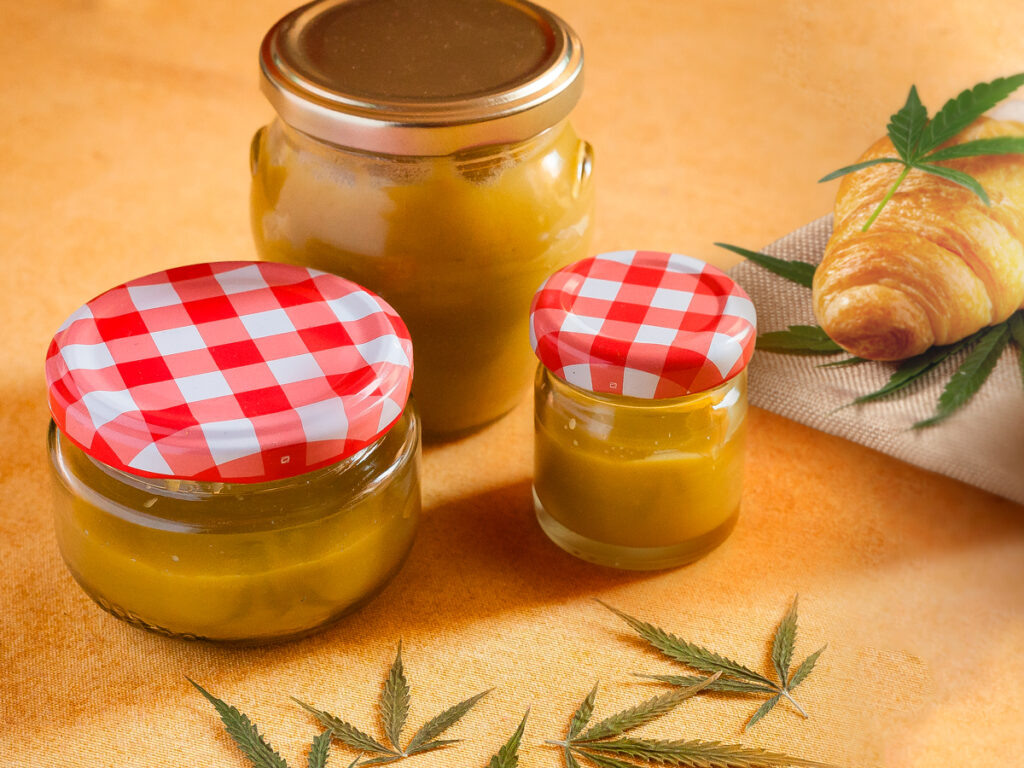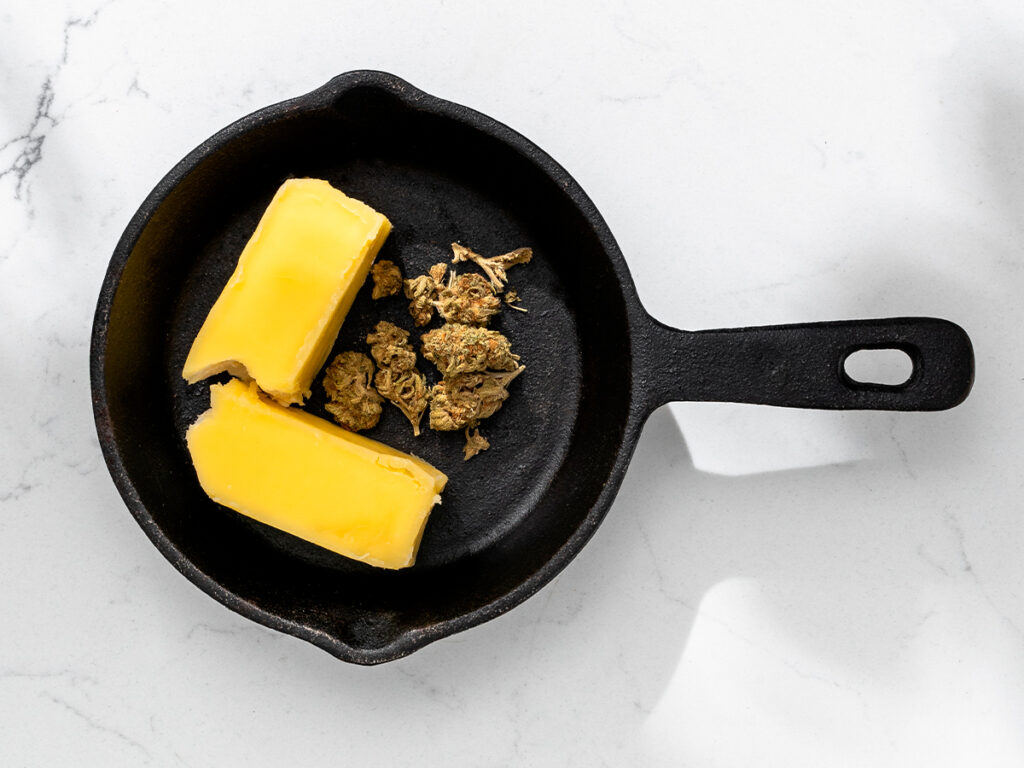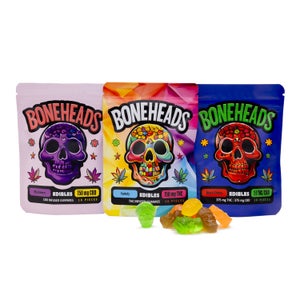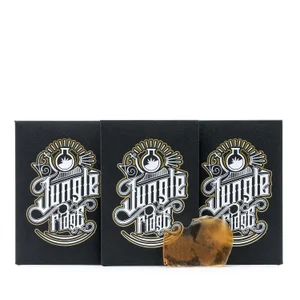Have you ever wondered how to make edibles? Cooking with cannabutter is one of the most common and easiest ways to make edibles at home because you can add cannabutter to practically any dish to instantly infuse it with cannabis! Let’s learn how to make cannabutter so you can start making your own homemade edibles today.
What Is Cannabutter?
Cannabutter, or Cannabis-infused butter, is one of the most satisfying ways to make a multitude of weed edibles thanks to its ease of use- and learning how to make weed butter is much simpler than you might think. The most important part of the process is the act of decarboxylation, which activates the THC. Don’t worry; we’ll show you exactly how to decarboxylate weed a bit later on. It’s MUCH more straightforward than it sounds, we promise!
Selecting Your Strain
One of the most important choices when planning to make cannabutter is the results and what effects you want from your edible.
If you are chasing a body high to alleviate aches and pains, a quality Indica-dominant strain, like Death Bubba, will likely help what ails you. On the other hand, if you are after an uplifting effect, Sativa-dominant strains, like Dutch Hawaiian, are an excellent choice to increase creativity as well as productivity.
Flower or Trim
Another choice is whether you are going to use flower or trim. When using flower, the potency will be in the range of the strain you’re using, usually between 20 -30% THC, whereas trim can be as low as 2 or 3% THC.
- Did you know: Trim refers to the plant material that is trimmed or cut away from the buds during harvest. These small leaves can be coated with trichomes though the most sugar-coated ones remain on the buds, which means trim has a significantly lower THC potency.
Choosing between flower or trim will influence potency, flavour, strength of effects, and even how much cannabis to use.
Some shops—like us—include kief, small buds, and shake in their trim to improve quality and increase THC content for those interested in going this route.
The potency of the strain will directly impact serving sizes. If you use a weaker 10% THC flower, it will take more product to make the same dosage as a 20% THC flower. This point also applies to trim.
Dosage
Dosage is a concern when choosing a strain as well. It helps to convert your flower weight from grams (as it is commonly sold) to milligrams (mg).
- 1 gram = 1,000 milligrams
We recommend using 7 – 10 g of ground cannabis. While that might sound like a lot, cannabutter has a fridge life of 2-3 weeks and a freezer life of 6 months.
To calculate rough dosage, take the weight in milligrams and multiply it by the THC percentage of the flower.
- For example: If you have one gram of 20% THC flower, multiply that by 1000.
- [0.20 THC] x [1000 mg of THC = 200] = 200 mg
That means each gram has roughly 200 mg of THC, so if you’re making a batch of butter with 10 g of that flower, that’s 2,000 mg of THC.
You can then figure out the dosage per cup of butter by figuring in how much better your cannabutter recipe calls for. The one we’ll list in moment calls for two sticks, which is one cup of butter.
From there, you can calculate how much THC is in your edible based on how much cannabutter you used.
For instance, if you make brownies that call for ½ cup of cannabutter (recipe below), and you use 10 grams of 20% flower as in the scenario above, the entire batch will have 1,000mg of THC.
Then divide by the number of servings your recipe creates. For instance, if you cut the pan of brownies into 20 servings, each brownie has right around 50mg of THC.
Here’s a rough guideline on how much THC you want per dose, though keep in mind ideal dosage varies by the individual:
Mild pain relief
- 1 – 10 mg
Moderate pain relief/buzz
- 10 – 30 mg
Strong pain relief/high
- 30 mg+
Decarboxylation: What You Need
- 7 – 10 grams of flower or 2 ounces of trim – Indica or Sativa based on your desired result
- Mason jar with lid
- Baking sheet
- Lightly damp towel
Decarboxylation is the process in which the THCA (tetrahydrocannabinolic acid), which has no psychoactive effect, is changed into the coveted THC that does get you high. That change occurs by heating the cannabis.
Decarboxylation is the whole reason why we light the joint on fire and smoke it.
Some chefs may be reluctant to cook with cannabis because of the scent—however, if the cannabis is decarbed in an enclosed mason jar, the smell is trapped inside!
The most common way of preparing flower for use in cannabutter is to either hand grind or use scissors to achieve a coarse grind for the cannabis. If the cannabis becomes too powdery, your butter can taste of chlorophyll, the embodiment of that infamous grassy taste some edibles have.
What if I skip decarboxylating?
The cannabinoids likely will not activate. The decarb process is what activates the THC for our intended consumption. If the meal is prepared with non-decarboxylated cannabis, it could have all the flavours of cannabis without any of the effects.
How to decarboxylate your weed
- Preheat your oven to 240 degrees Fahrenheit.
- Cut or break up the cannabis into a chunky texture, put it in the mason jar, and secure the lid.
- Place the damp towel on the baking sheet under the jar to help anchor it on the sheet.
- Place the baking sheet and cannabis on the middle rack for 45 minutes, shaking and rolling the jar every 15 minutes.
- Remove it from the oven and let stand 30 minutes before opening. Do not open the jar while it is warm. It could reduce the potency.
How to Make Cannabutter
- Slow Cooker
- Strainer
- Bowl
- Cheesecloth
- 250 grams or 2 sticks of unsalted butter
- 4 cups of water
Once your decarboxylated cannabis has cooled, place all your ingredients in a slow cooker on low for 8 to 10 hours.
During this time, the cannabis will infuse with the unsalted butter. After the infusion process is complete, you can then get a bowl, strainer, and cheesecloth. Strain the infused cannabis liquid through the sieve and cheesecloth, do not squeeze the cheesecloth.
As we know, cannabis is a plant, so squeezing the remaining juice from the plant material can give the cannabutter a green chlorophyll flavour.
Now that your beautiful green cannabutter is in the bowl, cover it, and place it in the fridge until the butter solidifies, usually overnight. Once the butter has solidified, it should be floating on top of the water, and you can remove it to store the cannabutter for later use.
How to Use Weed Butter
The best thing about cannabutter is its versatility. As it can take the place of butter in most recipes, weed butter is a fantastic choice for the home chef.
It can be used as a fat substitute for more complex foods like steak, garlic butter, nacho cheese, or even a baked potato!
It’s important to note that if you want to reduce the taste of cannabis in your edibles, all that needs to be done is to increase the butter’s potency to substitute in more standard butter. Increasing the potency will dilute the taste of cannabis while also putting the same dosage into your edibles.
Making weed brownies
One of the most classic weed butter recipes is box-made brownies. Let’s see what is needed.
- Baking dish
- 1/2 cup of Cannabutter
- 1 Box of brownie mix
- 2 Eggs
- 1/4 Cup of Water
- Large bowl
Begin by preheating your oven to 350. During the preheat cycle, you can grease the bottom of your baking dish lightly with the cannabutter you made. Place the brownie mix, eggs, water, and softened cannabutter into a large bowl before mixing. Put your brownie mix in the baking dish to bake at 350 for 21-23 minutes.
Also Read: How to Make Weed Edibles
Frequently Asked Questions
Do edibles lose potency?
Typically, edibles lose little to no potency during the cooking process. THC is wholly degraded at 392 degrees Fahrenheit, but cannabis butter will lose potency if used to sauté or pan-fry. The edibles themselves don’t lose potency over time, but they are susceptible to the base food’s shelf life.
Why does my cannabutter taste like grass?
If your cannabis is ground into too powdery of a texture, the plant matter will become integrated with the butter. Another possibility is the low potency of cannabis used, requiring more plant material for the same effect.
How do I know my potency?
It depends. Every batch of cannabutter can be different depending on the strain, amount, or your goals. A good practice is to prepare toast or a warm muffin and spread a 1/4 or 1/2 teaspoon of your cannabis-infused butter.
Eat and wait 1-2 hours to feel the effects. Once you find the dosage that you like, multiply that dosage per serving of your edibles and voila!
Conclusion
Cooking with cannabis butter is an excellent way to shake up your regular routine. Making cannabutter allows you to experiment, from the basic brownie to a weed-infused buffalo chicken recipe for game night.
Making your own cannabutter is easier than ever for Canadians. A great alternative to cannabutter is THC syrup. It’s easy to apply to all sorts of edibles and beverages. Make sure to check out our guide on how to make your own THC syrup for a great alternative to cannabutter.
We can ship premium flower right to your door in a vacuum-sealed envelope to make your cannabis culinary adventure that much easier.
Check out our website today to find your favourite strain.






